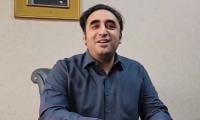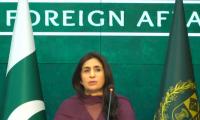LAHORE: Pakistan’s economic management is a rudderless ship that continues to drift aimlessly without ever reaching its destination, which unfortunately is also also unclear.
The government wants to accelerate growth, but it pursues policies that strangulate it. It aims to contain inflation but the huge fiscal deficit and regular hikes in petroleum, power and gas rates are highly inflationary measures. Its managers want to document the economy without annoying traders that hate documentation.
Nabbing tax evaders is its stated goal, but it shudders at the thought of allowing the tax inspectors to raid their business premises. The Prime Minister himself has promised several times to check the food prices. The food inflation however remains high as ever. It hurts lower strata of society more than the rich.
The government has abdicated its responsibilities and the market is manipulated by hoarders, middlemen, and traders.
Its economic managers have no solid plans. The finance minister (now advisor on finance and revenue) immediately after assuming office categorically stated the gas and power tariffs would not be increased.
He said the International Monetary Fund (IMF) could be convinced in this regard as the Federal Board of Revenue (FBR) has surpassed the revenue collection targets by Rs275 billion in the first four months of this fiscal.
However, he failed to realise that the IMF not only wants higher revenue collection but also desires to check the ever-increasing circular debt in power and gas sectors. Circular debt could be checked either by eliminating corruption in the system or by increasing tariffs.
The increased revenues by FBR were not diverted to reduce the circular debt. That amount helped to minutely reduce the budget deficit.
The economic managers intend to keep the rupee stable against the US dollar but its continuously losing value. Even the finance adviser’s warning that dollar would depreciate soon by Rs8-9 was not taken seriously by the public as the rupee continues to depreciate in the inter-bank and open market. He lost his credibility. Similar warning was given by Ishaq Dar in December 2013, but he had done his homework well.
The dollar declined by almost Rs10 rupees within a week and those that hoarded dollars lost heavily. Market players act on economic reality.
The much-touted Saudi loan of $3 billion (not yet received) is for one year only as there is no clause for a rollover. How are we going to pay back $3 billion in one go after a year? Market players are also skeptical about around $3 billion Roshan Digital Account deposits of overseas Pakistanis at twice the markup we pay to other creditors.
Rupee would stabilise when exports increase appreciably. We have certainly seen robust growth in exports, but the imports have increased by double the percentage that mounted pressure on the rupee.
We must also understand all the increases in exports are not because of higher volumes but mainly because of higher global prices after Covid-19. In the same way increase in imports is more due to higher than usual commodity rates. With the opening of many economies there would be further pressure on the rupee.
As international travel accelerates, so will be the drainage of foreign exchange. International travel has become very expensive after Covid-19.
The government boasts of energising industrialisation through special economic zones under CPEC. Yet in more than three years not a single SEZ has been satisfactorily colonised.
We are still to announce a long-term textile policy or an auto policy. We are facing gas shortages because our planners failed to place orders for LNG on time. This happened last year as well. Our economic condition is so precarious that despite announcing withdrawal of tax exemptions worth Rs400 billion we have promised the IMF to cut our development budget by Rs200 billion.
Some export sectors have been facilitated but the domestic industry has been ignored. The ever-increasing power tariff is making costs higher and the recent tendency to jack up interest rates has made the credit expensive.
Locally produced products are gradually losing the market to imports from countries where power tariff and markup are low. The construction sector after initial promise has lost its shine, evident from regular decline in cement consumption in the country. This sector provides livelihood to many unskilled workers.
Sheikh argued that the government should have maintained stable petroleum prices
MARI has successfully drilled and tested the third appraisal well in the Ghazij formation in the Mari D&PL
Gold rates decreased by $17 to $2,395 per ounce in the international market
Company's revenue saw a 13.9% year-on-year increase, reaching Rs49.2 billion, up from Rs43.19 billion in the same...
A man counts US dollars in a money exchange shop in Dhaka. — AFP/FileLAHORE: The first thing that the government...
Power generation stood at 8,741 gigawatt-hours or 11,749 megawatts in March







